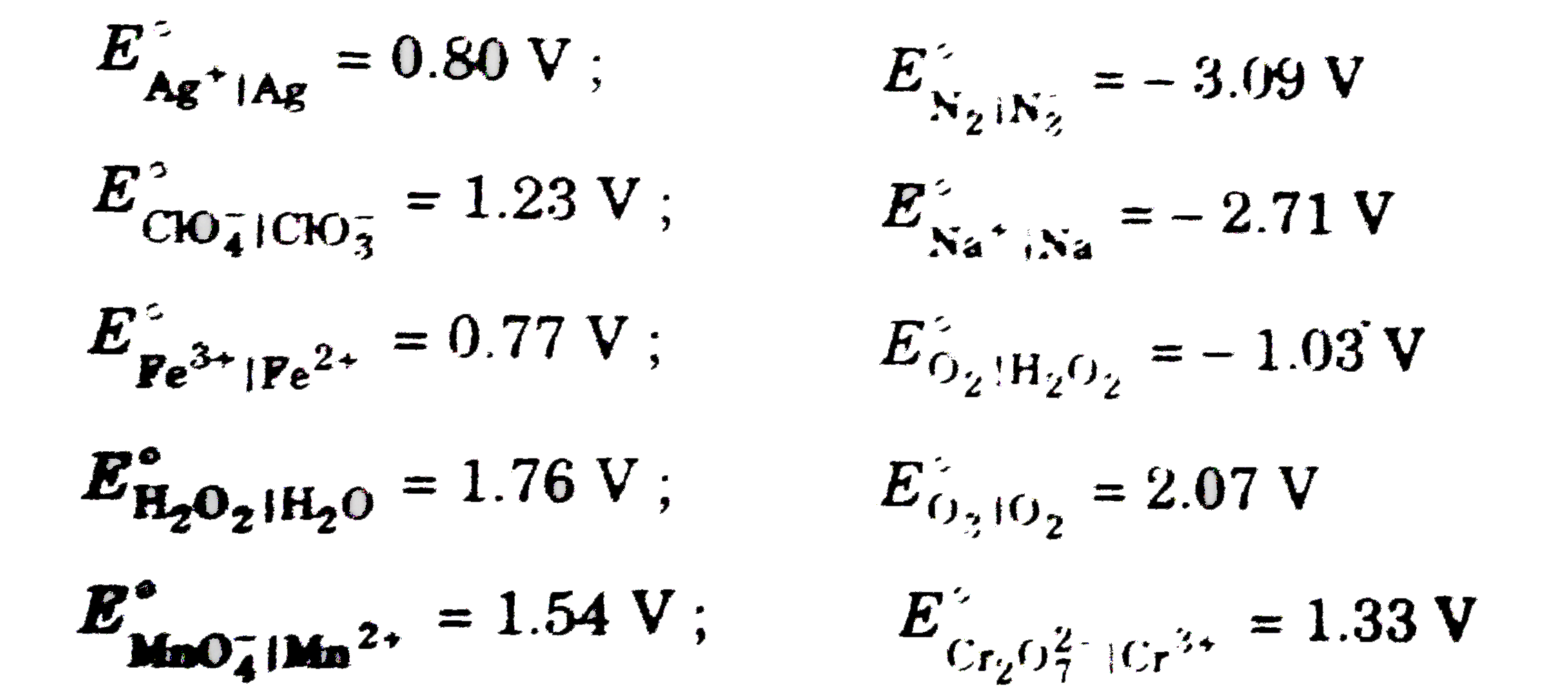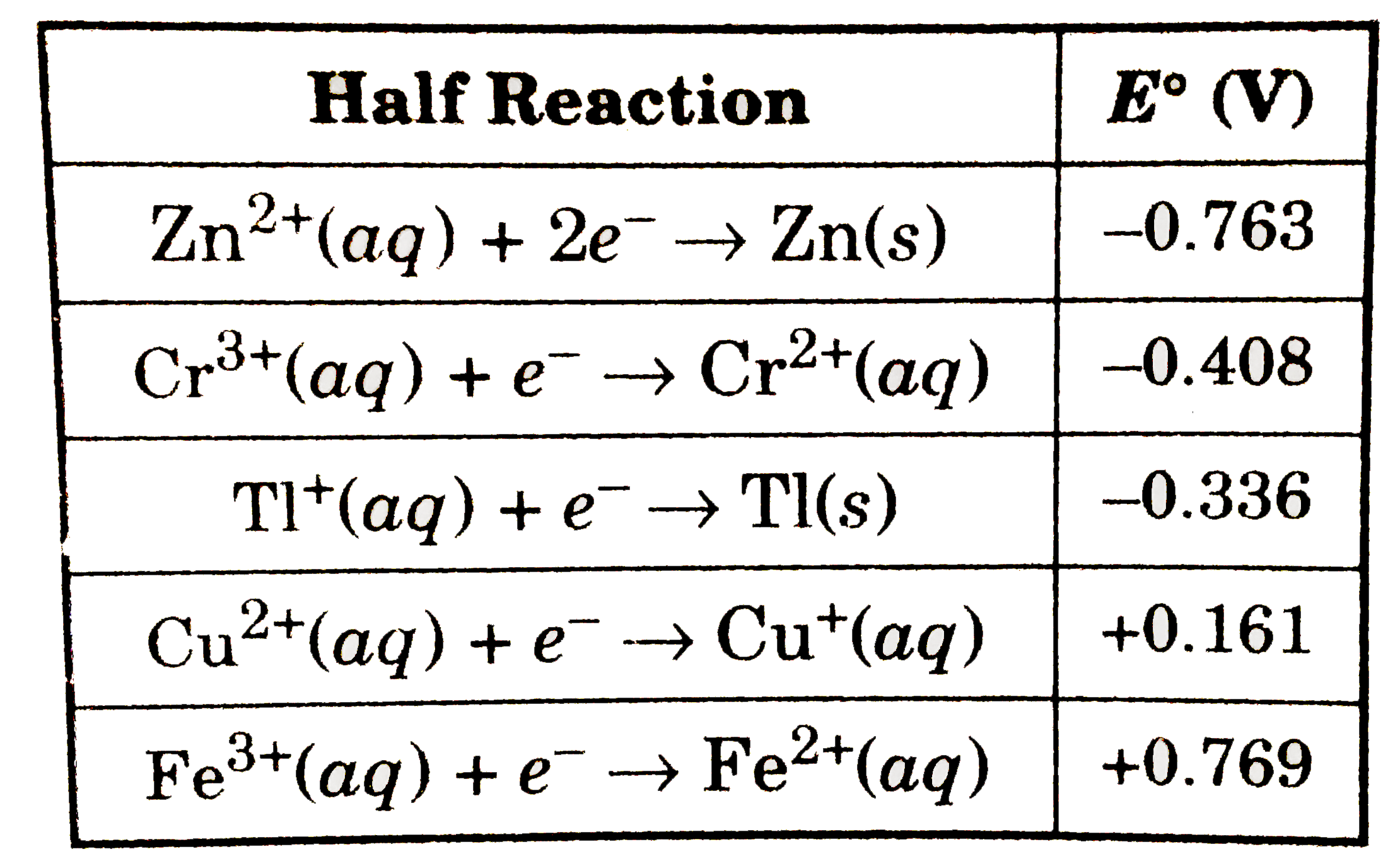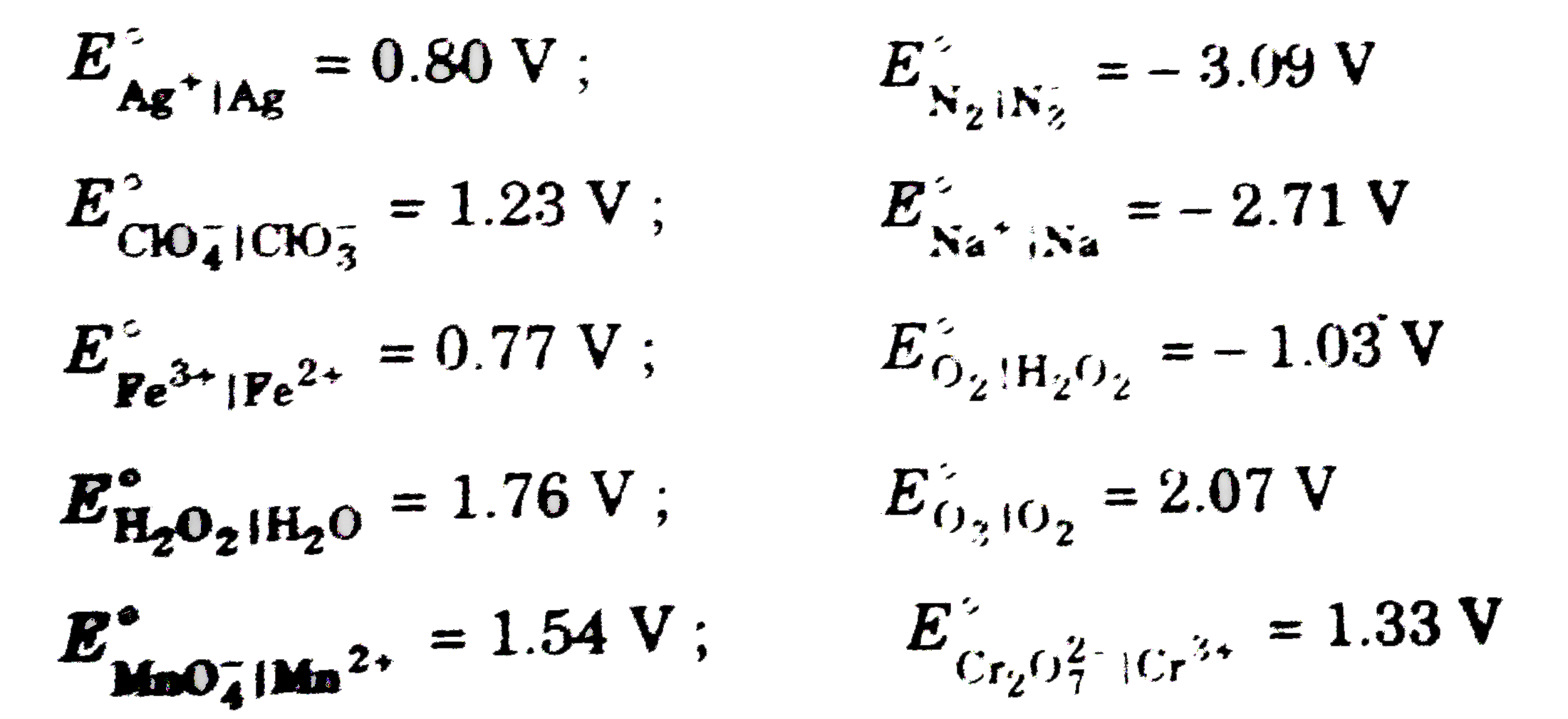Standard reduction potentials (SRP) for different systems can be used to decide the spontaneity of a reaction e.g., E∘2n2+/Zn=−0.76V, hence for the reaction Zn+2H+→Zn2++H2,ΔG∘ is negative. It has been found experimentally that if (SRP of an oxidant-SRP of a reductant) is more than 1.7V, then their combination may lead to explosion (though it may be prevented by kinetic factors).
Now go through the following data and answer the questions.
Data:

Which of the following ion will be capable of causing catalytic decomposition of H2O2?
Fe3+ increases
Fe3+ will be reduced to Fe(2+)
Both a and b
none of these
The correct Answer is:C
Step by step video, text & image solution for Standard reduction potentials (SRP) for different systems can be used to decide the spontaneity of a reaction e.g., E_(2n^(2+)//Zn)^(@)=-0.76V, hence for the reaction Zn+2H^(+)rarrZn^(2+)+H_(2),DeltaG^(@) is negative. It has been found experimentally that if (SRP of an oxidant-SRP of a reductant) is more than 1.7V, then their combination may lead to explosion (though it may be prevented by kinetic factors). Now go through the following data and answer the questions. Data: Which of the following ion will be capable of causing catalytic decomposition of H_(2)O_(2)? by Chemistry experts to help you in doubts & scoring excellent marks in Class 12 exams.
Topper's Solved these Questions
- BOOK - GRB PUBLICATIONCHAPTER - ELECTROCHEMISTYEXERCISE - Match the column type16videos
ELECTROCHEMISTY
- BOOK - GRB PUBLICATIONCHAPTER - ELECTROCHEMISTYEXERCISE - Subjective type39videos
ELECTROCHEMISTY
- BOOK - GRB PUBLICATIONCHAPTER - ELECTROCHEMISTYEXERCISE - Multiple objective type33videos
ELECTROCHEMISTY
- BOOK - GRB PUBLICATIONCHAPTER - D-BLOCK ELEMENTSEXERCISE - Subjective Type18videos
D-BLOCK ELEMENTS
- BOOK - GRB PUBLICATIONCHAPTER - ENVIRONMENTAL CHEMISTRY EXERCISE - Straight objective type40videos
ENVIRONMENTAL CHEMISTRY
Similar Questions
The standard oxidation potential E∘ for the half cell reactions are
Zn→Zn2++2e−:E∘=+0.76V
Fe→Fe2++2e−E∘=+0.41V
EMF of the cell reaction
Fe2++Zn→Zn2++Fe will beView Solution
Use the standard reduction potentials to find the standard cell potential E∘, for the reaction:
Zn(s)+2Tl+(aq)→Zn2+(aq)+2Tl(s)View Solution
Knowledge Check
- Question 1 - Select One
Standard reduction potentials (SRP) for different systems can be used to decide the spontaneity of a reaction e.g., E∘2n2+/Zn=−0.76V, hence for the reaction Zn+2H+→Zn2++H2,ΔG∘ is negative. It has been found experimentally that if (SRP of an oxidant-SRP of a reductant) is more than 1.7V, then their combination may lead to explosion (though it may be prevented by kinetic factors).
Now go through the following data and answer the questions.
Data:

Which of the following ionic combinations may lead to the formation of explosive substance?ASodium ion and azide ionBSilver ion and perchlorate ionCSilver ion and azide ionDAll of the above - Question 2 - Select One
Standard reduction potentials (SRP) for different systems can be used to decide the spontaneity of a reaction e.g., E∘2n2+/Zn=−0.76V, hence for the reaction Zn+2H+→Zn2++H2,ΔG∘ is negative. It has been found experimentally that if (SRP of an oxidant-SRP of a reductant) is more than 1.7V, then their combination may lead to explosion (though it may be prevented by kinetic factors).
Now go through the following data and answer the questions.
Data:

Which statement about standard reduction potentials in correct?AE∘H+/H2= zero at all temperatureBE∘D+/D2= Zero at 298 KCA redox reaction is feasible if sum of SRP of oxidant and that of reductant is a negative quantity.DK2Cr2O7 (acid) is stronger oxidising agent than KMnO4 (acid). - Question 3 - Select One
E0Zn2+/Zn=−0.76V The EMF of the cell Zn/Zn2+(1M)||HCl(pH=2)∣H2(1atm)),Pt is
A0.878VB0.642VC−0.878VD0.701V
The standard reduction potential E∘, for the half reaction are :
Zn→Zn2++2e−E∘=0.76VCu→Cu2++2e−E∘=0.34V
The emf for the cell reaction, Zn(s)+Cu2+→Zn2++Cu(s) is :View SolutionThe standard oxidation potential E∘ for the half cell reactions are
Zn→Zn2++2e−:E∘=+0.76V
Fe→Fe2++2e−E∘=+0.41V
EMF of the cell reaction
Fe2++Zn→Zn2++Fe will beView SolutionThe standard reducation potential E∘ for half reactions are
Zn→Zn2++2e−,E∘=−0.76V
Fe→FE2++2e−,E∘=−0.41V
the EMF of the cell reaction
Fe2++Zn→Zn2++Fe isView SolutionStandard reduction electrode potential of Zn2+/Zn is -0.76V. This means:
View SolutionThe standard reduction potential E∘ for the half reactions are as :E∘
Zn→Zn2+),E∘=+0.76V
Fe→Fe2++2e−,E∘=0.41V,
The emf for the cell reaction, Fe2++Zn→Zn2++Fe is ,View Solution

